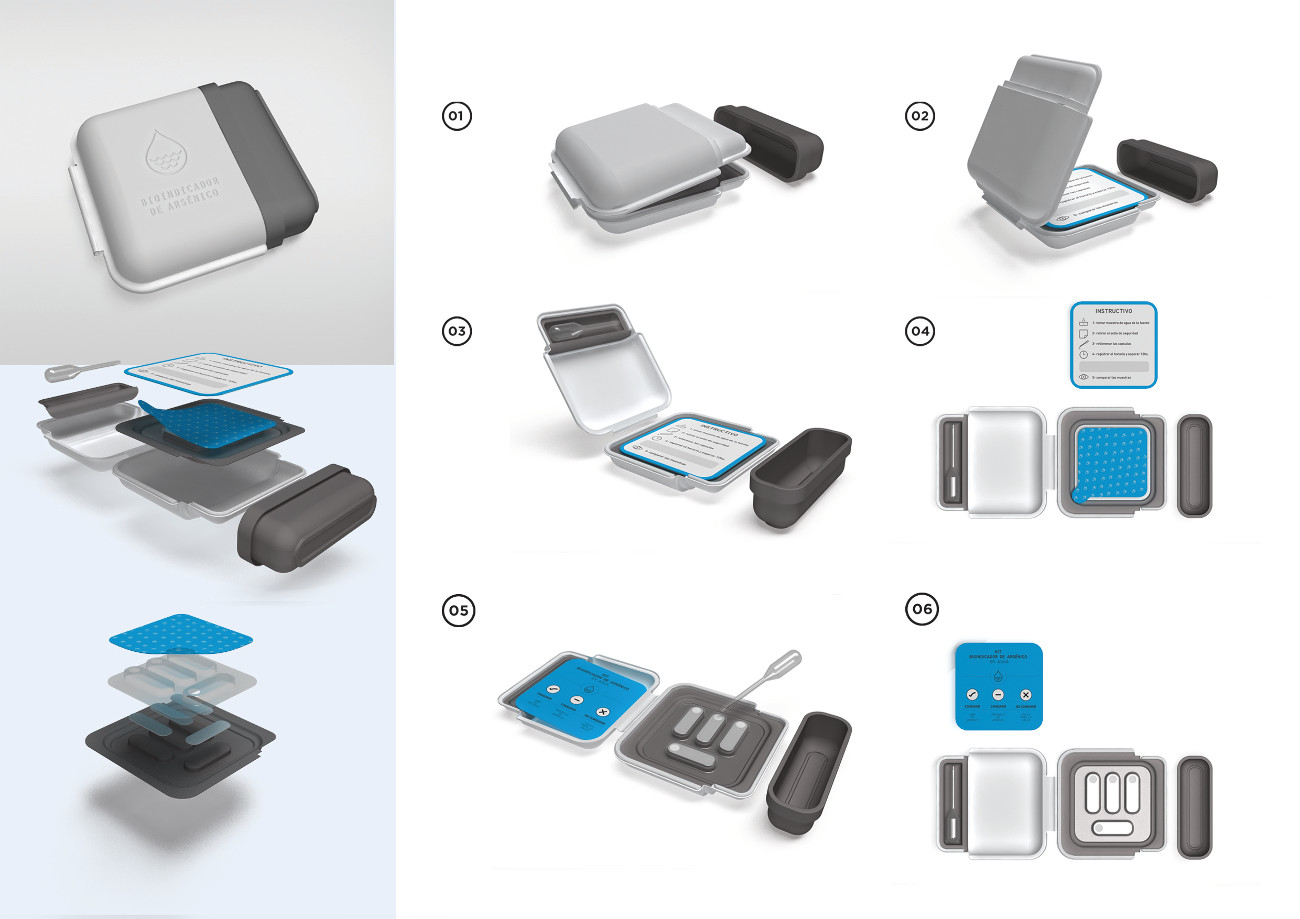Team:Buenos Aires/ device
From 2013.igem.org
The Device
We developed a physical design that meets our fundamental requirements:
• easy to use
• cheap
• safe
The physical design of our device consists of a plastic support in which we will deliver the bacteria lyophilized. Bacteria wells will be sealed to avoid accidental release. It will contain four different wells of bacteria: three wells will work as a standard pattern, each of them containing different amounts of arsenite physically isolated from bacteria, and a fourth well (the testing well) that will be used for sample measurement.
The usage of the device consists of:
• Collecting a sample of ground water.
• Adding the sample to the testing well and distilled water (provided with the device) to the standard pattern wells at the same time. As distilled water is added, arsenite in the standard wells dissolves and gets in contact with bacteria. At the same time, bacteria are recovered from the lyophilized state by the water added.
• Incubate for some hours, until colour differences are appreciable.
• After usage, bacteria die as they enter in contact with a bleach solution that is contained in a capsule which is dissolved some hours after entering in contact with water.
Finally, the user will be able to know if the water tested is drinkable, around the limit of arsenite allowed by the World Health Organisation or above it, by comparison with the standard pattern.
Safety and environment protection
The design of the final physical device will include a bleach reservoir to eliminate bacteria after usage. Besides, bacteria will be sealed in the corresponding wells, making it's spread not probable. In addition, E. coli DH5-Alpha is an auxotroph for thyamine.
With a few simple steps, the measurement could be done, as stated in the next animation:
 "
"
